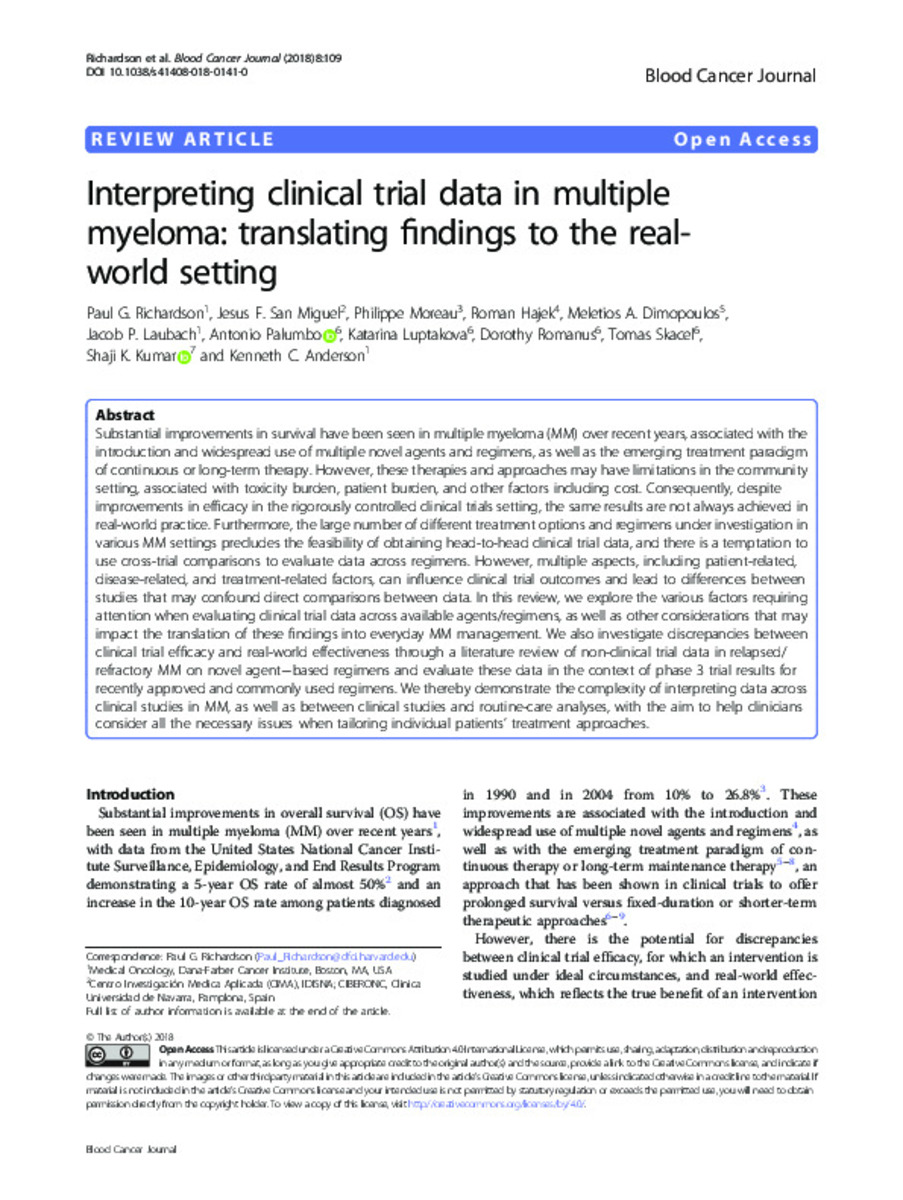Interpreting clinical trial data in multiple myeloma: translating findings to the real-world setting
Palabras clave :
Multiple myeloma (MM)
Widespread
Agents and regimens
Fecha de publicación :
2018
Editorial :
Springer Nature
Nota:
This article is licensed under a Creative Commons Attribution 4.0 International License, which permits use, sharing, adaptation, distribution and reproduction
in any medium or format, as long as you give appropriate credit to the original author(s) and the source, provide a link to the Creative Commons license, and indicate if
changes were made. The images or other third party material in this article are included in the article’s Creative Commons license, unless indicated otherwise in a credit line to the material. If
material is not included in the article’s Creative Commons license and your intended use is not permitted by statutory regulation or exceeds the permitted use, you will need to obtain
permission directly from the copyright holder
Cita:
Richardson, P.G. (Paul G.); San-Miguel, J.F. (Jesús F.); Moreau, P. (Philippe); et al. "Interpreting clinical trial data in multiple myeloma: translating findings to the real-world setting". Blood cancer journal. 8 (95), 2018, 109
Aparece en las colecciones:
Estadísticas e impacto
0 citas en

0 citas en

Los ítems de Dadun están protegidos por copyright, con todos los derechos reservados, a menos que se indique lo contrario.










